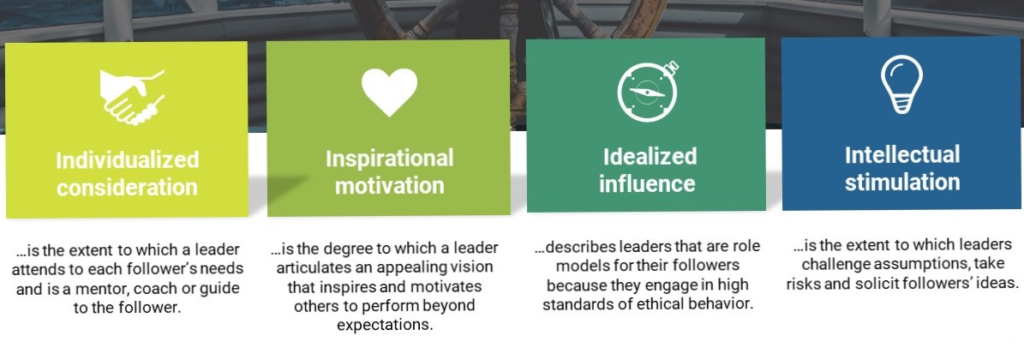Transformational leadership was popularised by Bass and Avelino in their book “Transformational Leadership“. Bass’s research on this leadership theory goes back to the early 1980’s and has grown substantially since then, especially with the adoption of business coaching and other new leadership methodologies intended on improving performance at work. Bass and Avelino distinguish between transactional leadership and transformational leadership.
Transactional leadership refers to the exchange relationship between leader and follower to meet their own self-interests. This comes in a few types of forms:
- It may take the form of contingent reward: in which the leader clarifies for the follower what the follower needs to do to be rewarded for the effort.
- It may take the form of active management-by-exception: in which the leader monitors the follower’s performance and takes corrective action if the follower fails to meet standards.
- It may take the form of passive leadership: in which the leader practises passive managing-by-exception by waiting for problems to arise before taking corrective action
- Finally the least effective form of transactional leadership is laissez-faire leadership that avoids taking any action.
Transformational leadership in contrast refers to the leader moving the follower beyond immediate self-interests through idealized influence (charisma), inspiration, intellectual stimulation, or individualized consideration. It elevates the follower’s level of maturity and ideals as well as concerns for achievement, self- actualization, and the well-being of others, the organization, and society.
- Individualized consideration is displayed when leaders pay attention to the developmental needs of followers and support and coach the development of their followers. The leaders delegate assignments as opportunities for growth.
- Idealized influence and inspirational motivation leadership are displayed when the leader envisions a desirable future, articulates how it can be reached, sets an example to be followed, sets high standards of performance, and shows determination and confidence. Followers want to identify with such leadership.
- Intellectual stimulation is displayed when the leader helps followers to become more innovative and creative.

Transformational leadership can be utilised for direct leadership between to supervisor/manager and the employees working for them. however it can also be used as a multi-level concept that works it way down through the organisation from the top management. This leans towards the inspirational motivation and idealized influence areas more, as they are the driving force for the organisation when attempting to change or for new businesses that follow their leader more directly due to the smaller size of the organisation. This has been found to be important in change management as well as disseminating the vision and mission of an organisation.
